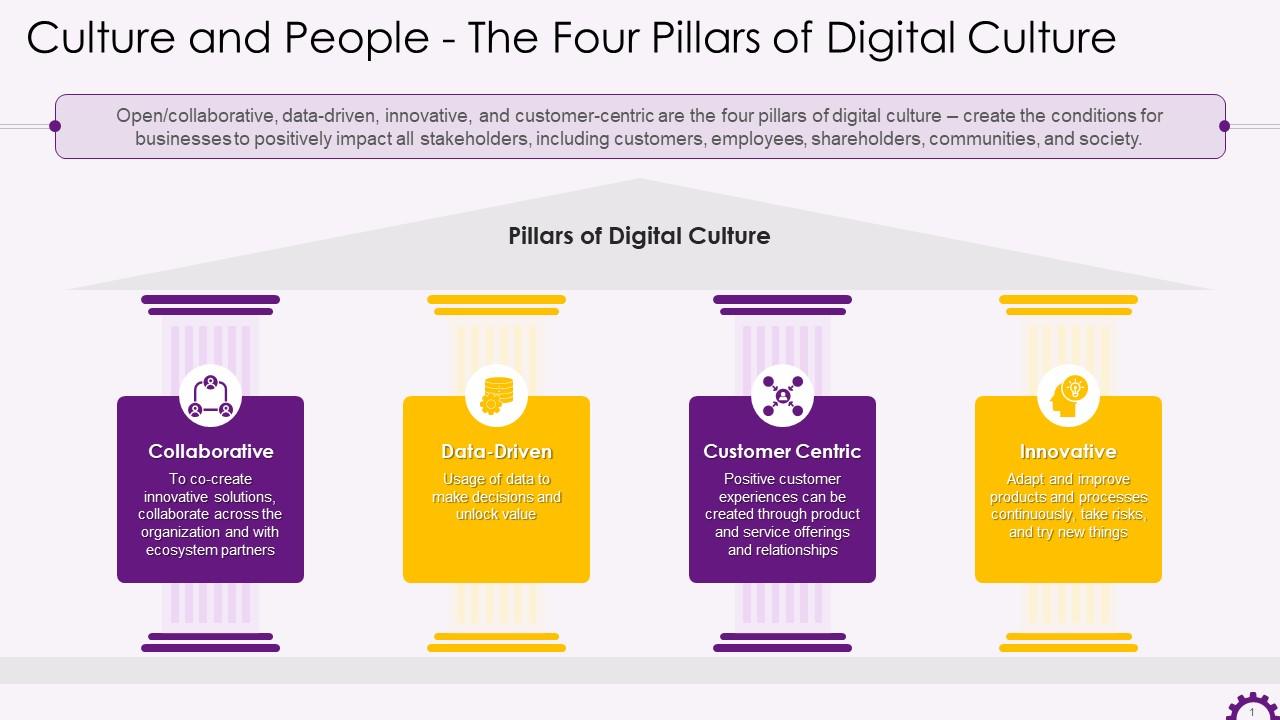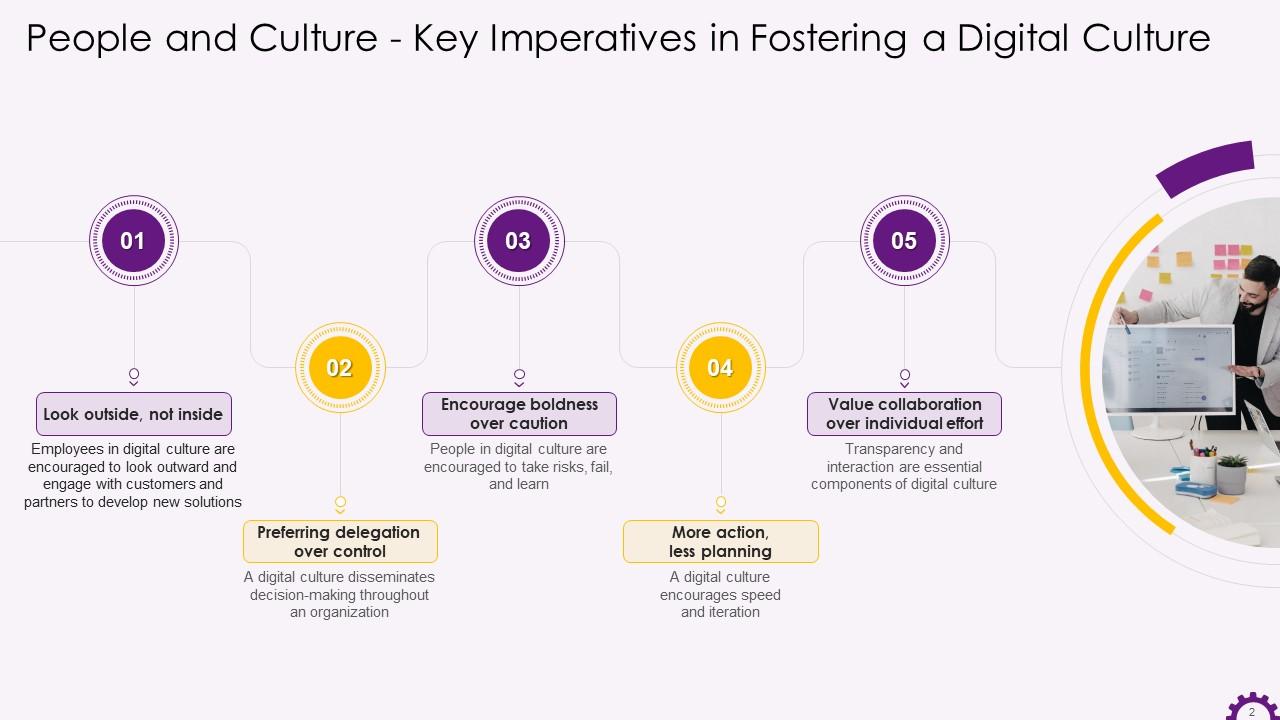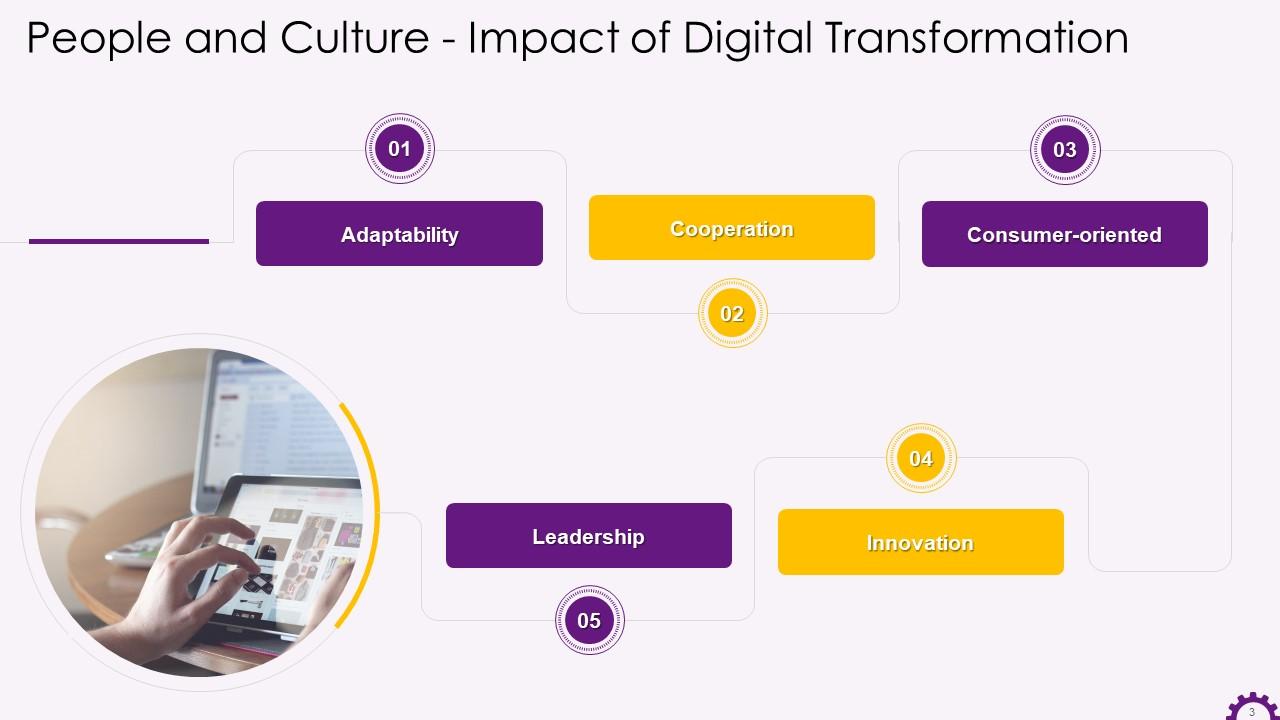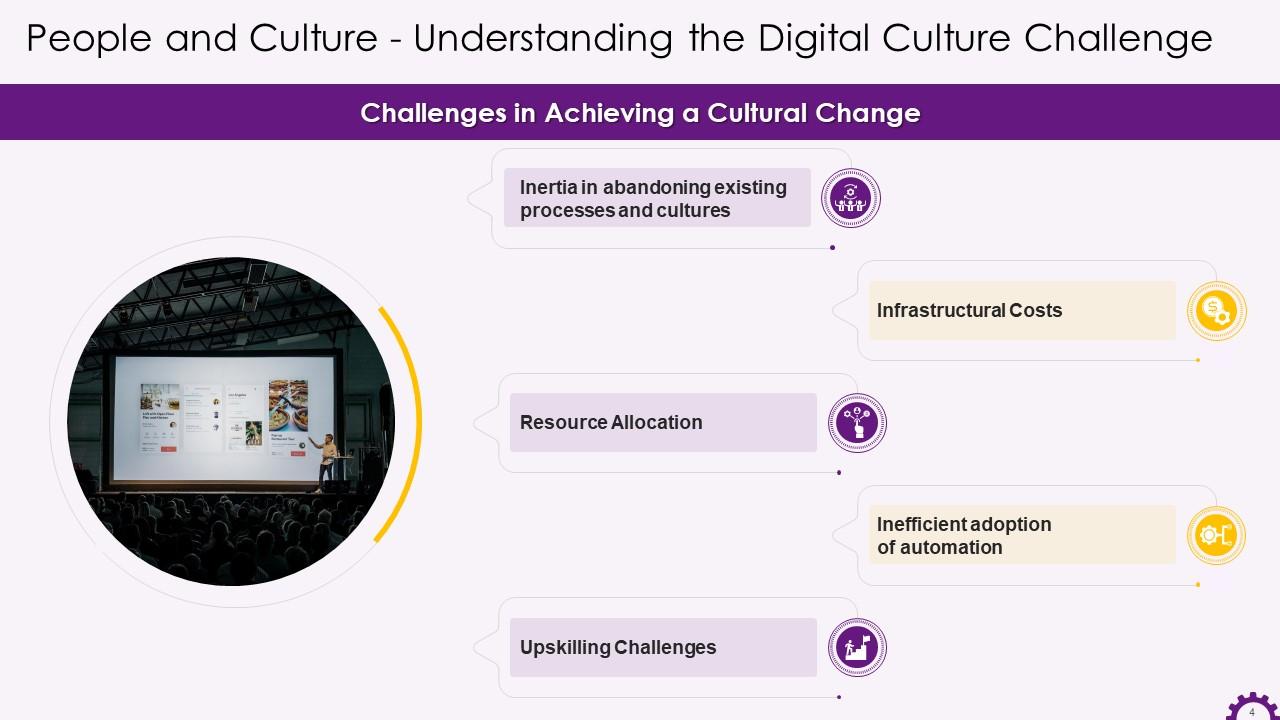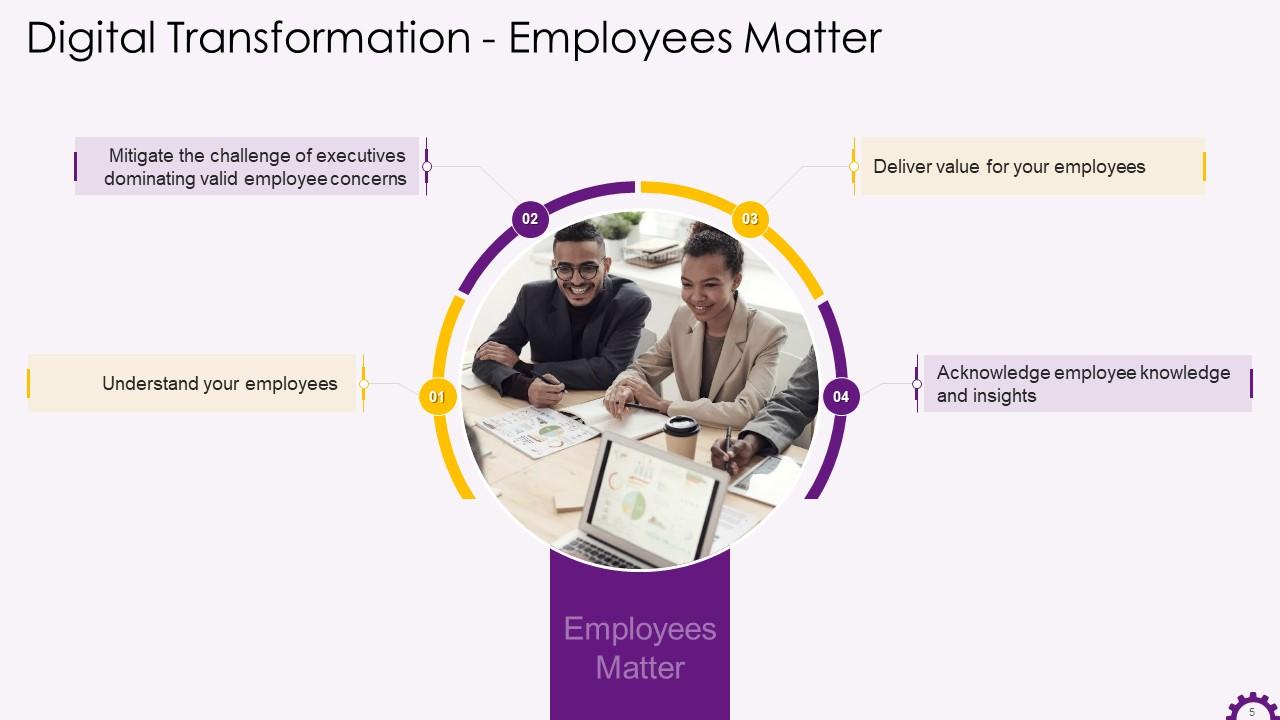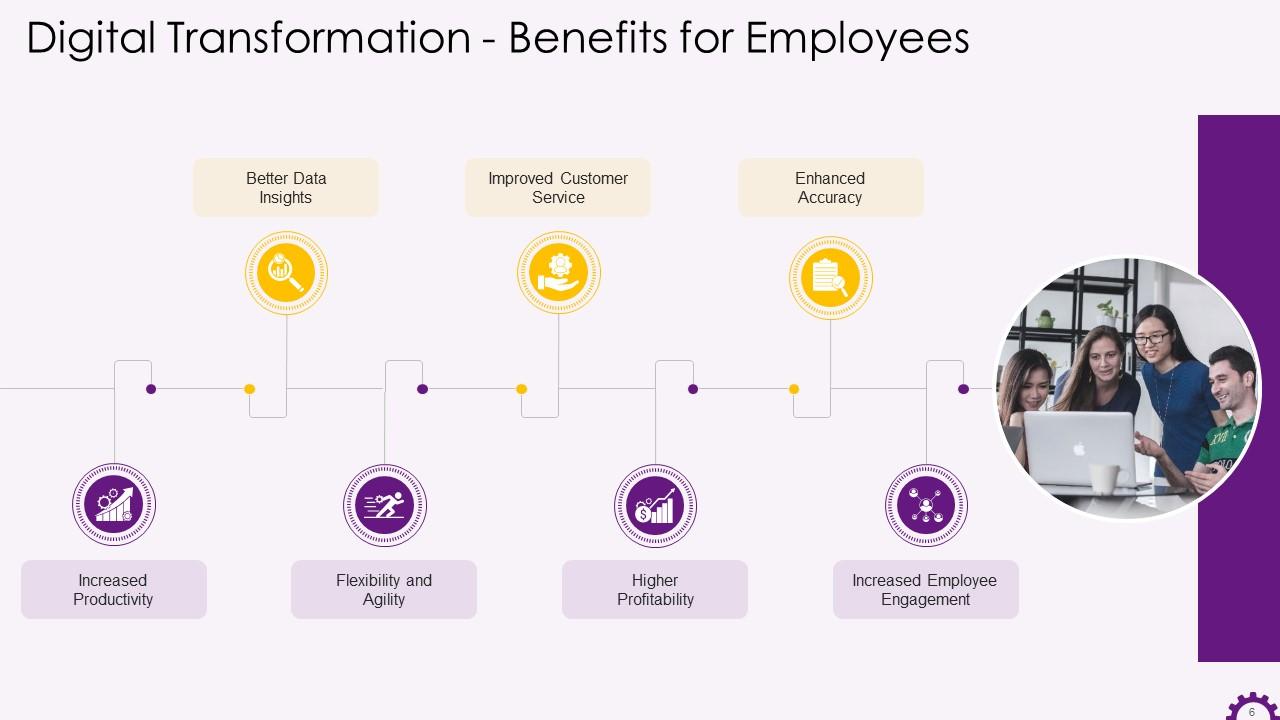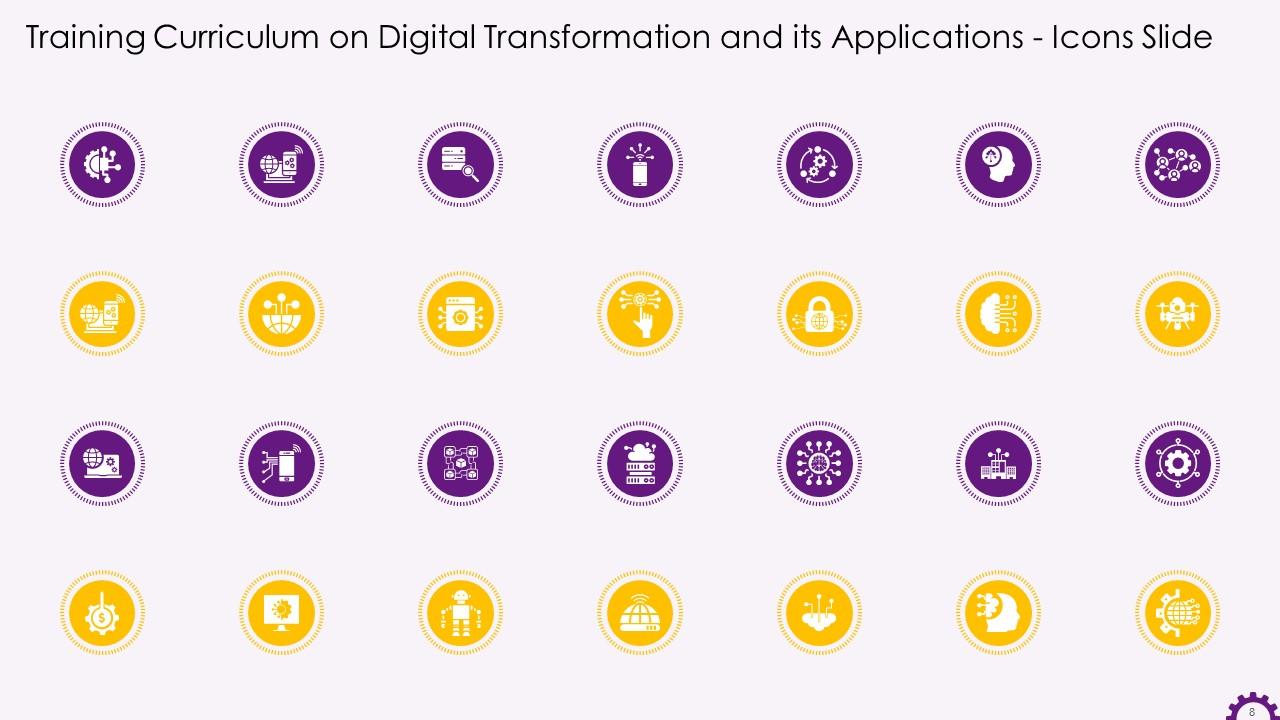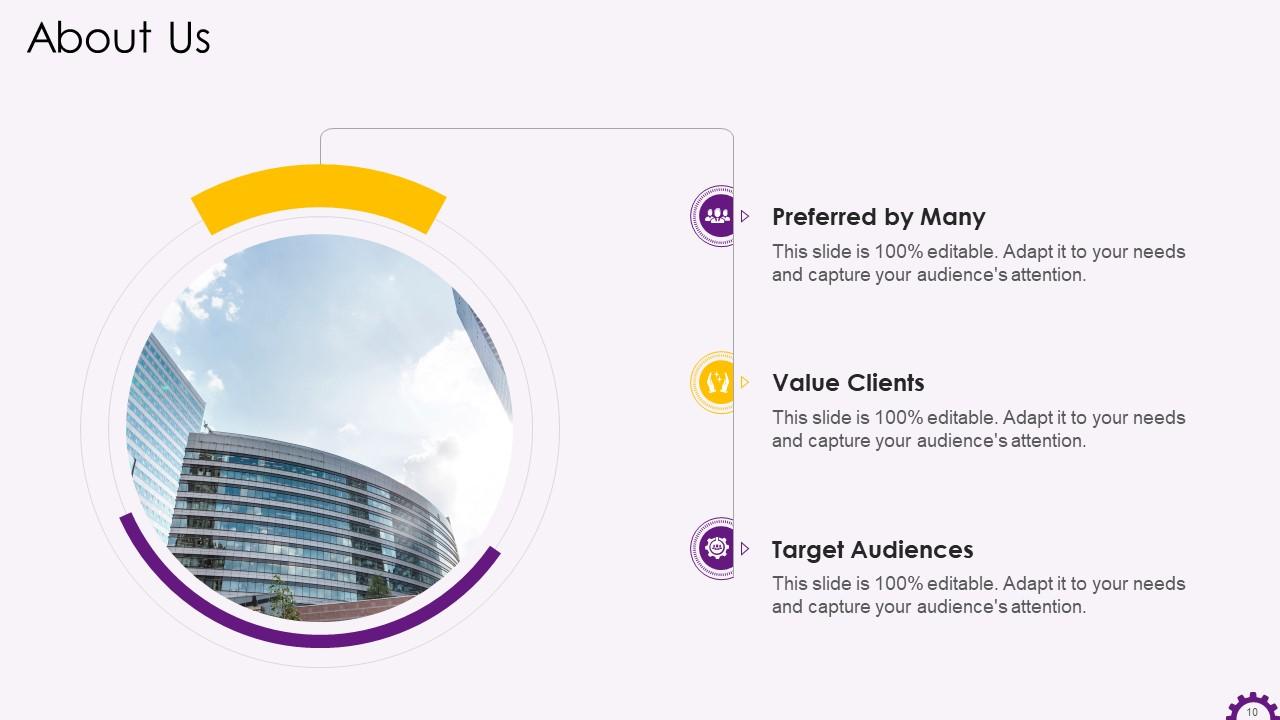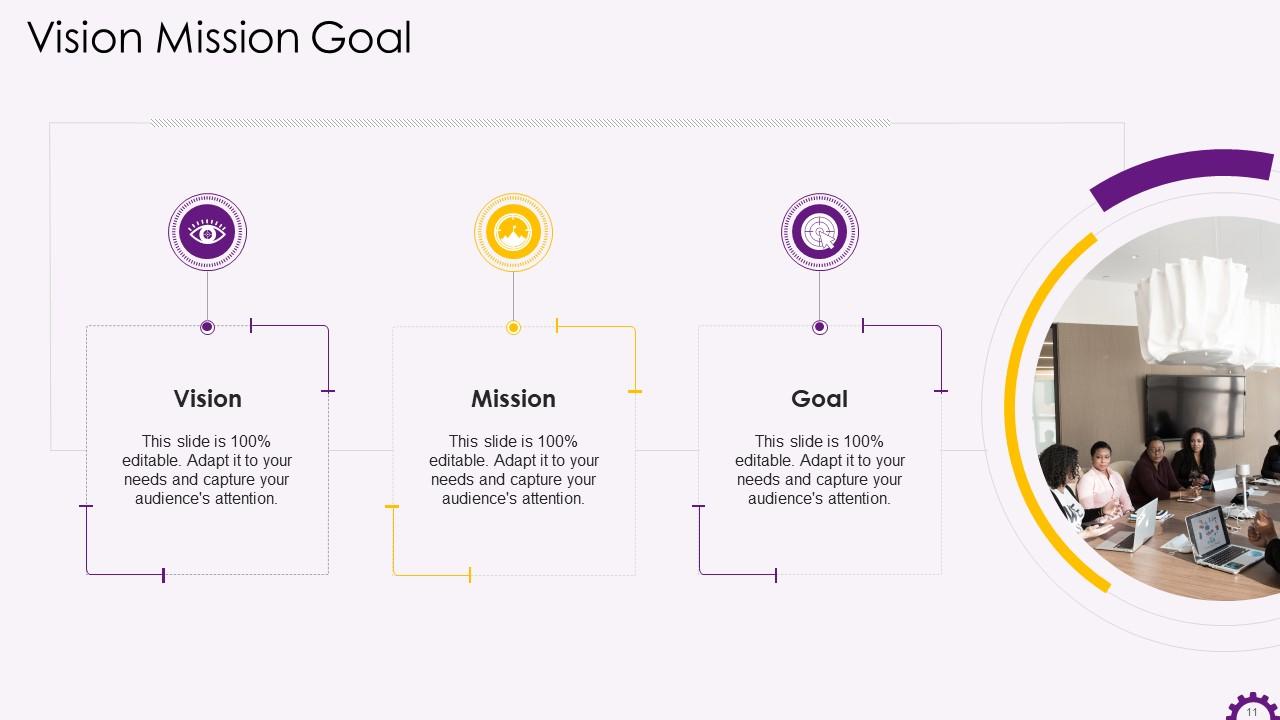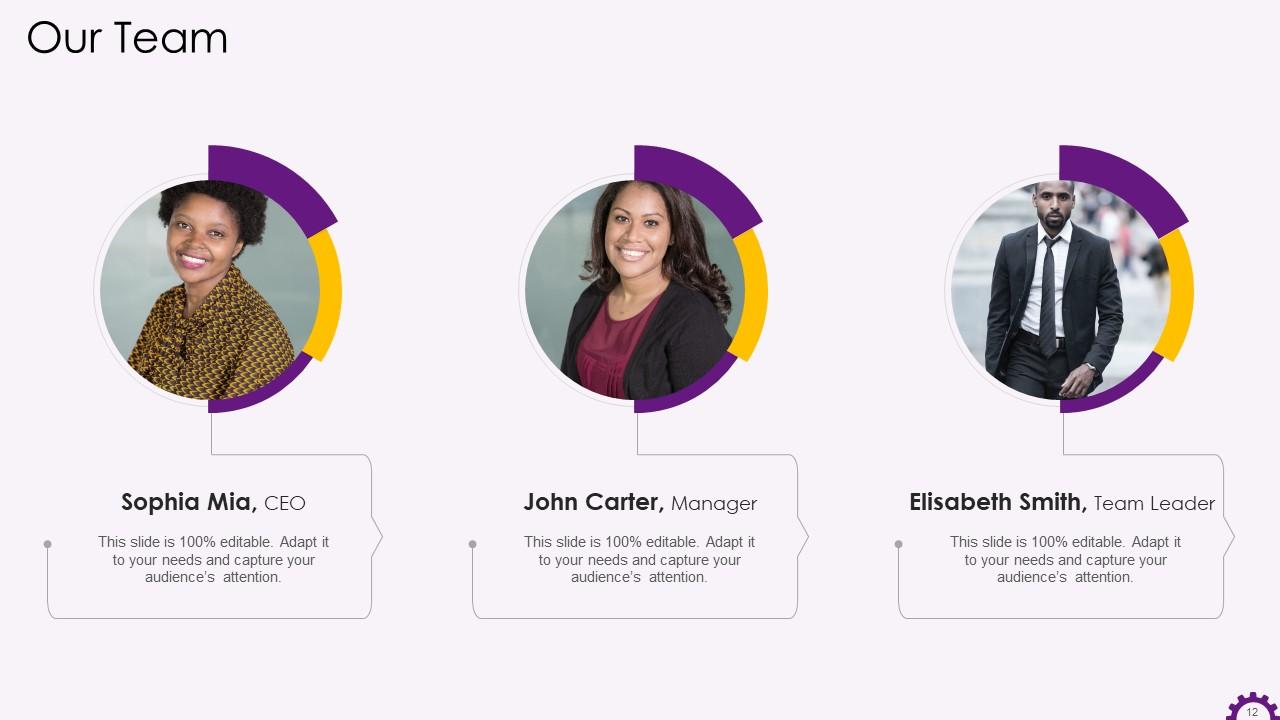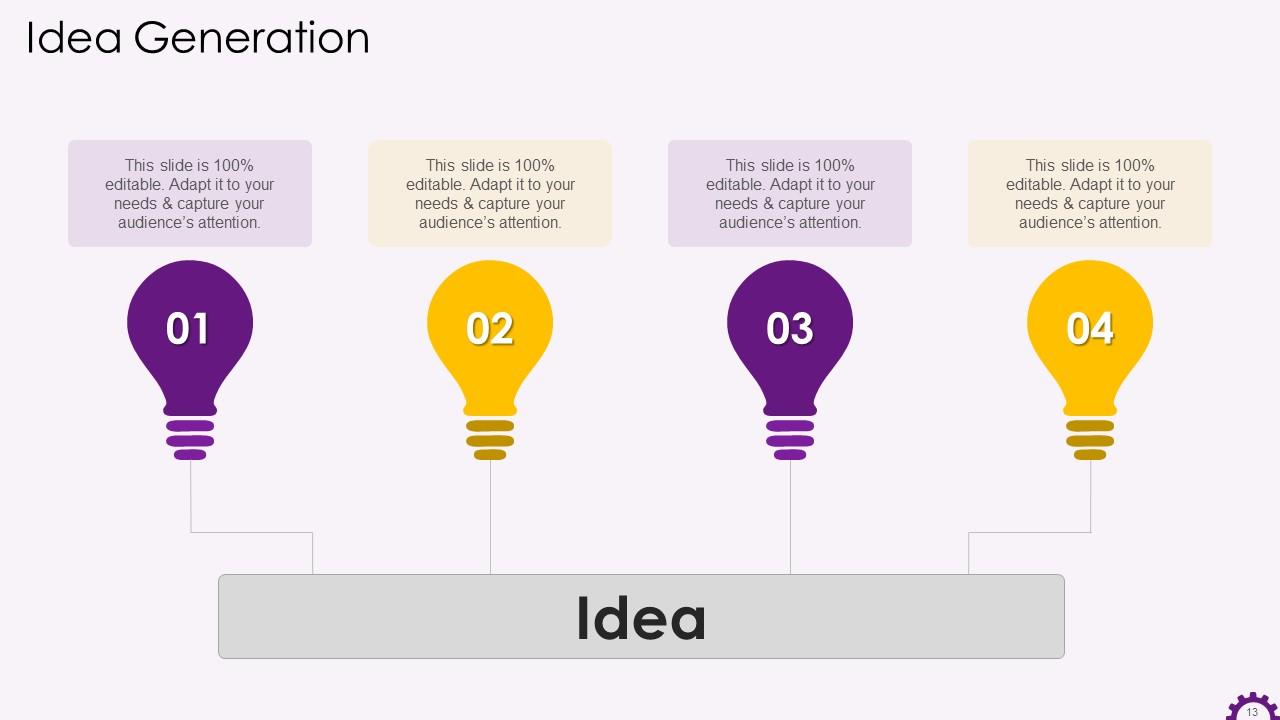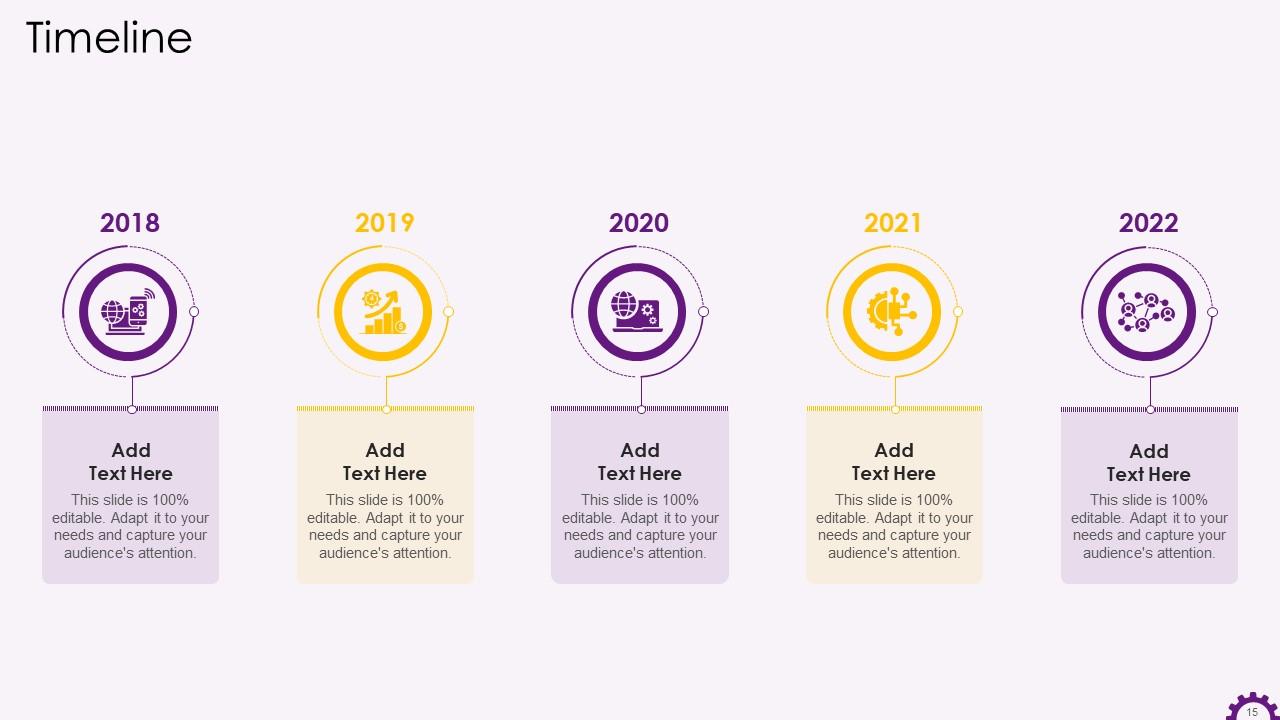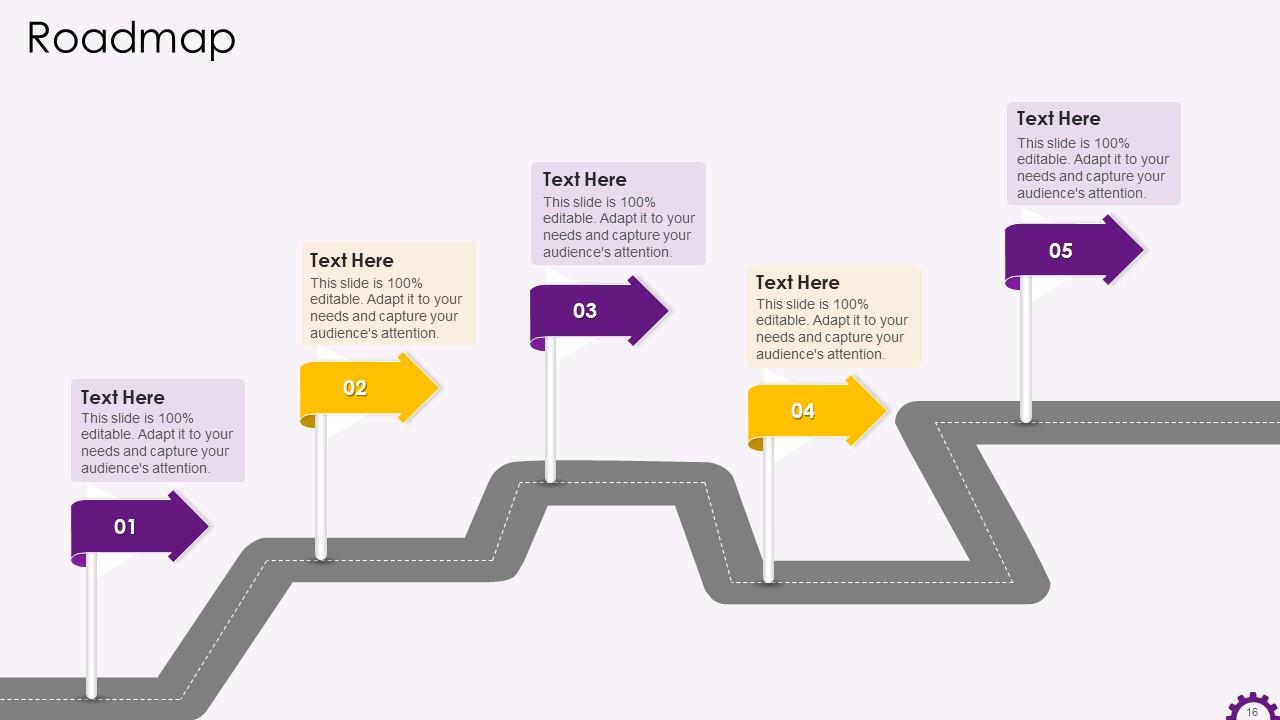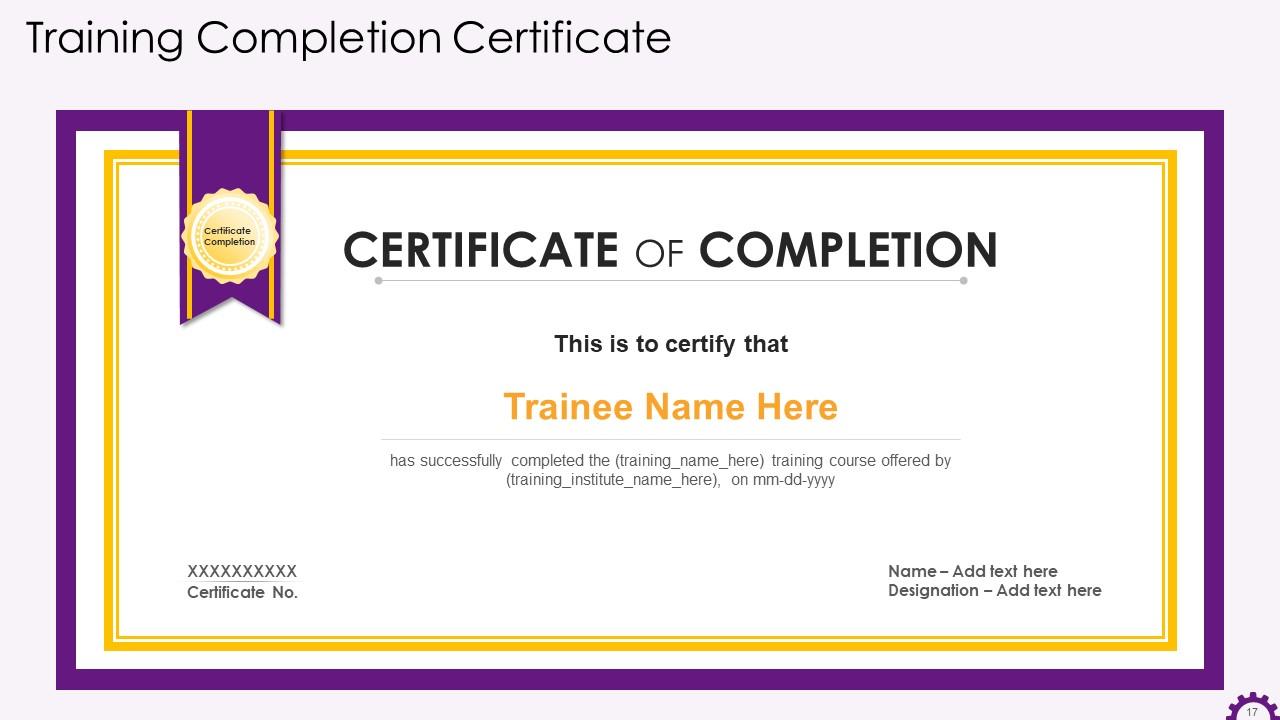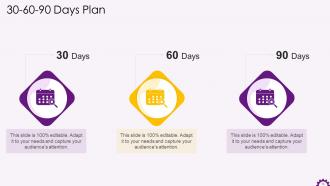Role Of Culture And People In Digital Transformation Training Ppt
This set of slides contains information about digital cultures four pillars collaborative, data-driven, customer-centric, and innovative. It also covers strategies to foster a digital culture in the organization. Further, it includes the impact of digital transformation on company culture, such as higher adaptability, improved cooperation, and more innovation. It also lists the challenges organizations face while implementing a digital culture and the benefits of digital transformation for employees.
- Google Slides is a new FREE Presentation software from Google.
- All our content is 100% compatible with Google Slides.
- Just download our designs, and upload them to Google Slides and they will work automatically.
- Amaze your audience with SlideTeam and Google Slides.
-
Want Changes to This PPT Slide? Check out our Presentation Design Services
- WideScreen Aspect ratio is becoming a very popular format. When you download this product, the downloaded ZIP will contain this product in both standard and widescreen format.
-

- Some older products that we have may only be in standard format, but they can easily be converted to widescreen.
- To do this, please open the SlideTeam product in Powerpoint, and go to
- Design ( On the top bar) -> Page Setup -> and select "On-screen Show (16:9)” in the drop down for "Slides Sized for".
- The slide or theme will change to widescreen, and all graphics will adjust automatically. You can similarly convert our content to any other desired screen aspect ratio.
Compatible With Google Slides

Get This In WideScreen
You must be logged in to download this presentation.
PowerPoint presentation slides
Presenting Role of Culture and People in Digital Transformation. Our PowerPoint experts have included all the necessary templates, designs, icons, graphs, and other essential material. This deck is well crafted by extensive research. Slides consist of amazing visuals and appropriate content. These PPT slides can be instantly downloaded with just a click. Compatible with all screen types and monitors. Supports Google Slides. Premium Customer Support is available. Suitable for use by managers, employees, and organizations. These slides are easily customizable. You can edit the color, text, icon, and font size to suit your requirements.
People who downloaded this PowerPoint presentation also viewed the following :
Content of this Powerpoint Presentation
Slide 1
This slide depicts the four pillars of digital culture. The four pillars are collaborative, data-driven, customer centric, and innovative.
Slide 2
This slide illustrates the critical imperatives in fostering a digital culture such as looking outside, not inside, preferring delegation over control, encouraging boldness over caution, more action, less planning, and value collaboration over individual effort.
Slide 3
This slide depicts the impact of digital transformation on company culture. The ways through which digital transformation can impact a company’s culture are adaptability, cooperation, consumer-oriented, innovation, and leadership.
Instructor’s Notes: The ways through which digital transformation can impact a company’s culture are
- Adaptability: The ability of a company to be effective is linked to its ability to be efficient. Employee efficiency is determined by their ability to identify, integrate, and complete the transformations in sync with the environment. To be successful in this attempt, it is critical to understand the distinctions between the three key concepts listed below. They are as follows:
- Strategic Agility: This implies how a company decides to transform
- Organizational Agility: It means that how a company implements transformational processes
- Operational Agility: It is the speed with which the transformation can take place
- Cooperation: A strong organizational culture assists leaders in rallying employees around a shared vision so that everyone contributes to the development of the business. The importance of collaboration and cooperation cannot be overstated. Furthermore, collaboration with external partners and customers is required to create collaborative eco-systems
- Consumer-oriented: With the rise of "smart" technology, businesses now have access to advanced analytics, providing precise insights into customer behavior. That means businesses can now anticipate customer behavior and handle it in real-time, seamlessly, and efficiently. "Smart" products enable a company to improve its interactions with customers and provide seamless purchasing experiences. Well-established company culture can ensure that employees use these technologies strategically to interact with customers with the most sophisticated levels of insights into individual customers
- Innovation: As consumers crave new technologies, fostering a culture in which creativity is valued and encouraged rather than feared and avoided is also critical. It is crucial to foster an environment that encourages employees to think outside the box, puts them at ease, and allows them to share innovative ideas
- Leadership: The traditional "top to bottom" organizational structure no longer works in today's business world. Information and ideas must be shared fluidly and openly within the organization. Leadership must drive innovation while also understanding that everyone can contribute to innovation and strategy. By adopting this new flexible mindset, companies can create a workplace where individuals can use their skill-set to develop ideas in line with corporate and personal goals
Slide 4
This slide illustrates the challenges faced by organizations while implementing digital culture. The challenges are inertia in abandoning existing processes and cultures, infrastructural costs, resource allocation, inefficient adoption of automation, and up skilling challenges.
Instructor’s Notes: The digital culture challenges are:
- Inertia in abandoning existing processes and cultures: One of the most perplexing issues business executives face is employees’ resistance to change. A company built on traditional and rigid processes and culture will naturally resist change because sticking to old processes is easier for employees than starting from scratch
- Infrastructural costs: Driving a digital culture is more than just a human endeavor; it needs its own full-fledged infrastructure. This infrastructure includes much more than just hardware and legacy software platforms. It necessitates things such as products, mobile applications, social, cloud, data analytics, and automation, all of which can be expensive for the enterprise and thus act as an impediment
- Resource allocation: Introducing new digital processes into an organization's workflow introduces newer tasks. With the addition of newer operational tasks, there is a need to allocate resources that can navigate the more recent processes tactfully. However, Enterprises are not always prepared to scale-up their resource allocation within that time frame, making digital transformation difficult
- Inefficient adoption of automation: A digital culture places a premium on automation, which entails abandoning manual processes. Most people comfortable in a traditional culture are hesitant to abandon the manual processes they have been using for decades. They are reluctant to get out of their comfort zone and adapt to automation. As a result, enterprise automation is not effectively implemented even when infrastructure processes are in place
- Upskilling challenges: One of the significant impediments to instilling a digital culture is a lack of digital literacy among employees. Employees accustomed to traditional processes will require careful planning of a training module to instill digital competencies. This can be difficult. To ensure success, businesses will need to invest heavily in organizing training sessions and mentorship programs
Slide 5
This slide showcases the importance of employees to an organization while implementing digital transformation. It mentions that an organization must understand its employees, deliver value to them, acknowledge their knowledge and insights, etc.
Slide 6
This slide illustrates the benefits of digital transformation for employees. The benefits are increased productivity, better data insights, flexibility and agility, improved customer service, higher profitability, enhanced accuracy, and increased employee engagement.
Instructor’s Notes: The benefits of Digital Transformation for Employees are:
- Increased Productivity: Employee productivity will rise due to digitizing business operations, streamlining workflows, and improving information flow throughout your organization. Integrating platforms to break down data silos and eliminate manual processes is a significant part of digital transformation
- Better Data Insights: Today data, is the king. Organizations are accumulating more customer data than ever before as the number of online services grows. Many businesses are implementing analytics tools to help them gain powerful insights that will guide intelligent business decisions. Organizations will benefit from greater transparency and informed decision making by structuring data and giving employees the ability to analyze it quickly
- Flexibility and Agility: Another advantage of digital transformation for employees is increased flexibility. Employees can now access the files and systems they need from anywhere, thanks to the fact that many businesses host at least one application or a portion of their computing infrastructure on the cloud. Employee work-life balance has improved due to not being tied to the office and traditional working hours
- Improved Customer Service: Nobody enjoys dealing with dissatisfied customers. Giving employees the tools they need to respond quickly and automating customer journey elements will improve both the employee and customer experience. While nothing beats human interaction, employees will have more time to help customers who require more in-depth assistance by incorporating elements of automation and client self-service
- Higher Profitability: Digital transformation can deliver measurable RoI as IT becomes more strategic. Many businesses are leveraging technology to provide a competitive advantage, allowing employees to work smarter and provide better customer service. A company that becomes more profitable due to digital transformation is more likely to innovate faster and maintain its market leadership position
- Enhanced Accuracy: Employees may be able to automate specific processes, reduce the burden of paperwork. It helps them combine inputs from disparate systems, improving information accessibility, which is one of the key benefits of upgrading systems. Employees can eliminate the possibility of human error and be confident that they are providing a consistent and accurate service by automating basic processes
- Increased Employee Engagement: Businesses can benefit significantly from digital transformation by upskilling their teams. Employees must be engaged throughout the implementation process and adequately trained to use new technology. By investing in employee development, employees are more likely to feel motivated and valued, resulting in higher employee retention rates
Role Of Culture And People In Digital Transformation Training Ppt with all 22 slides:
Use our Role Of Culture And People In Digital Transformation Training Ppt to effectively help you save your valuable time. They are readymade to fit into any presentation structure.
-
Very unique and reliable designs.
-
A big thanks to SlideTeam! An incredible and diverse library of templates helped me with my business project presentation.


